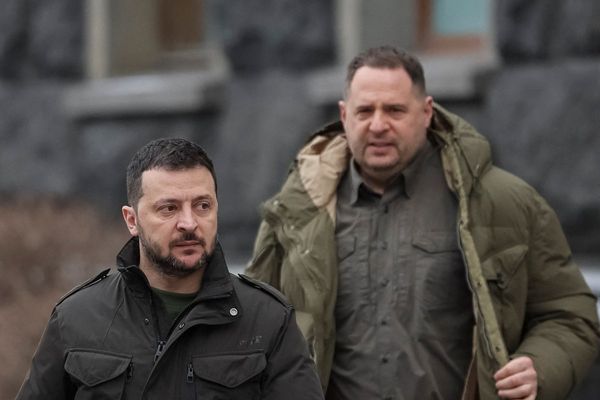
The National Portrait Gallery in London has been closed for three years. I wish I could say that I’ve missed it. This is a museum with barely any great art in it, a peculiarly British institution that reflects our national cult of celebrity. Since 1856 it has amassed pictures of the great and good, as they were seen in their day, and consistently downgraded art: labels give the sitter first, then the artist. The NPG has always been surface, flash, fame and, artistically, nothingness.
Now it is about to reopen, changed utterly, we’re told. It makes a massive claim to have become a serious temple of art before you even get inside. Tracey Emin has etched female faces with stark intensity on the new bronze doors. This is her answer to Rodin’s The Gates of Hell in Paris – a very personal hell, her pain preserved permanently, facing Leicester Square and the West End crowds. Her soul-baring is apparently a manifesto for the new National Portrait Gallery, an insistence that this is now a place that sees past celebrity to the inner self.
As if. Once you go through the grand new entrance hall on the north side you quickly find it’s the same old cocktail party. This is still a rum collection packed with paintings that are “after” Holbein or “studio of” Van Dyck, and dinosaur oddities such as Sargent’s portrait of 22 first world war generals – you wonder how many youths they sent to their deaths between them. Immense effort has gone into showing these so-so paintings at their very best. The lighting is to die for, the curating erudite and thoughtful. It looks as if weeks of discussion went into every wall colour. There’s a new logo and museum typeface – how much did that cost? – and a gravity worthy of a gallery with much greater things in it.

I watched Sir Joshua Reynolds’s Portrait of Mai, the Pacific islander who sailed to Britain with Captain Cook, being delicately manoeuvred into place in a gallery of Georgian paintings. The National Portrait Gallery has fought to buy this picture and its director, Nicholas Cullinan, calls it “by far the most significant acquisition the gallery has ever made”; but it’s not a painting that holds your gaze long. Reynolds is such a cardboard artist. He gives Mai nobility, for sure – why wouldn’t he? – but his style is so lacking in painterly nuance that all you can really do is “like” it and move on. Perhaps Reynolds has found his moment in the social media age when quick moral judgements are replacing ambiguous aesthetic encounters. Really loved this 18th century image of diversity! #Enlightenment.
You would certainly have to look at art as superficially as that to rave about Yevonde, the early 20th-century photographer who gets a retrospective a couple of levels down. Her art is all surrealistic glamour and artificial colours, with images of women that we are told by the captions are hugely radical yet look the opposite. A 1938 picture of a young woman on a bike has a caption that hails “an active woman … as she travels astride a symbol of women’s liberation”. I don’t see much difference between this and the kind of shallow exhibition the “old” NPG used to do of photographers such as Lord Snowdon and Mario Testino.

The contemporary galleries, too, look oddly familiar under their veneer of reimagineering. Which is a shame because they really needed a proper rethink. Thomas J Price’s statue of a young Black woman looking at her phone among marble busts of dead white people in the entrance hall promises a revolution, but it’s still the same shoddy chaos. In one display a bunch of very ordinary portraits are all outclassed by a really good painting by Alex Katz of Anna Wintour.
You can argue that representation is more important than artistic quality – but that leaves the NPG where it always was, a collection of notable faces with no regard for artistic depth. What is new is a mortal dread of being seen as cosy and middle class, bespeaking a loathing for its traditional audience and determination to woo a completely new crowd who may not even exist. Royal portraits have been scattered around furtively, inserting William and Kate in a wall of ordinary folk (some of us are royal – deal with it), while the late Queen appears with Prince Philip in a photo by Thomas Struth as if to cleanse the shame of royal portraiture with a shower of coolness, Struth being famous for his street photography in New York and Düsseldorf.
It is absurd of the NPG to pretend that it’s a highbrow avant-garde gallery. It is nothing of the sort. Its appeal is conservative and simple: pictures of great Britons. And it comes into its own – just as it did before the ostentatious closure – on the top floor, where portraits of the Tudor, Stuart and Georgian ages take you absorbingly into the past.
The Tudor gallery is gorgeously tenebrous and enigmatic. Henry VIII towers up in Holbein’s lifesize drawing for part of his lost Whitehall Mural, an original, not “workshop of”. The monster monarch is a wall of a man, his codpiece bulging by his phallic dagger as tiny eyes skulk in his fleshy head. It’s a portrait that has a resonance and profundity, of a multiple wife killer and despoiler of monasteries. The biggest bastard in the place still gets the greatest work of art.
• This article was amended on 21 June 2023: it was the photographer Thomas Struth, not Ruff, who took a picture of the late Queen and Prince Philip.
• The new National Portrait Gallery, London, opens on 22 June.







